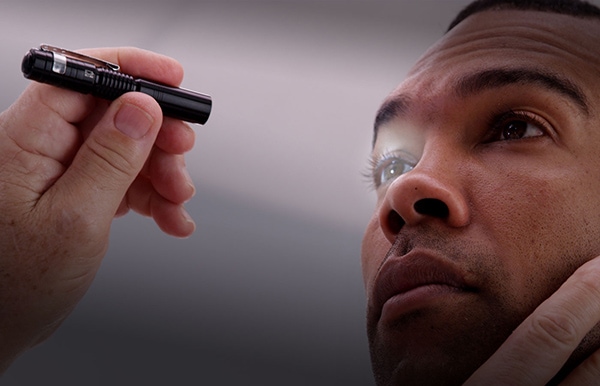The Neuroscience behind Pupil Diameter Measurement: A Comprehensive Guide to Neuro Exam Tools
3 min read
The pupil diameter measurement is a crucial aspect of neuro exams, as it can provide valuable insights into a patient’s neurological health. But what exactly is pupil diameter measurement, and what is the neuroscience behind it?
This comprehensive guide will break down the science behind pupil diameter measurement and introduce you to the neurological tools used in the process. From understanding how the brain controls the size of pupils to learning about the various neuro exam tools available, this guide has everything you need to know about this vital aspect of neuro exams.
What is Pupil Diameter Measurement?
The pupil diameter measurement is the size of a person’s pupils. It is a simple yet powerful tool used in the medical field to assess a patient’s neurological and physiological state.
The pupil diameter measurement is integral to a neuro exam, as it can provide valuable information about a patient’s overall health. The pupils’ size can indicate various neurological conditions, including head trauma, brain tumors, and even certain medications.
For example, a dilated pupil can indicate a brain injury, while constricted pupils can indicate the use of certain drugs. Additionally, abnormal pupil reactivity, such as a lack of response to light, can indicate a severe condition, such as a brain stem lesion.
So, pupil diameter measurement may be a small but crucial part of a neuro exam, providing valuable insights into a patient’s neurological and physiological state, which can help diagnose and treat various conditions.
What is the Neuroscience Behind Pupil Diameter Measurement?
Measuring pupil diameter can provide valuable insights when understanding the brain and its functions. The pupil, the black circle in the center of the eye, regulates the amount of light that enters the eye. But did you know that pupil size is also closely related to the brain?
The Pupil and Light
The size of the pupil is affected by the amount of light in the environment. When it’s dark, the pupil dilates or gets bigger to allow more light to enter the eye. When it’s bright, the pupil constricts or gets smaller to prevent too much light from entering the eye. This is known as the pupillary light reflex, controlled by the autonomic nervous system.
Traumatic Brain Injury and Pupil Diameter
Doctors can also use pupil measurement to assess traumatic brain injuries (TBI). In cases of TBI, the pupils may become unequal in size, a condition known as anisocoria. This can be a sign of a skull fracture or brain injury and should be evaluated by a medical professional.
So, pupil diameter measurement can provide valuable insights into the brain and its functions, from regulating the amount of light that enters the eye to assessing traumatic brain injuries. By measuring the size of the pupil, medical professionals can better understand the brain and help individuals with brain injuries get the care they need.
What is the Neuro Exam Tools Used for Pupil Diameter Measurement?
NPi Pupilometer
The NPi pupilometer is a precise and non-invasive tool used to measure the size of the pupils. It uses infrared technology to accurately measure the diameter of the pupils in millimeters.
Ophthalmoscope
An ophthalmoscope is a handheld instrument commonly used by eye doctors to examine the inside of the eye. It allows for a direct view of the retina, which can help detect any abnormalities in the pupils.
Retinoscope
On the other hand, a retinoscope is used to measure the eye’s refractive error. It is a handheld instrument that shines a light into the eye and allows the examiner to assess how the eye focuses light.
Slit Lamp
A slit lamp is a microscope specifically designed to examine the eye’s front and back. Doctors can use it to examine the pupils, the cornea, the lens, and other eye parts.
Overall, pupillary evaluation is an essential aspect of neuroscience, and several tools are commonly used in this process, such as NPi pupilometer, ophthalmoscope, retinoscope, and slit lamp. Each tool provides a unique function and allows for a thorough examination of the pupils.






